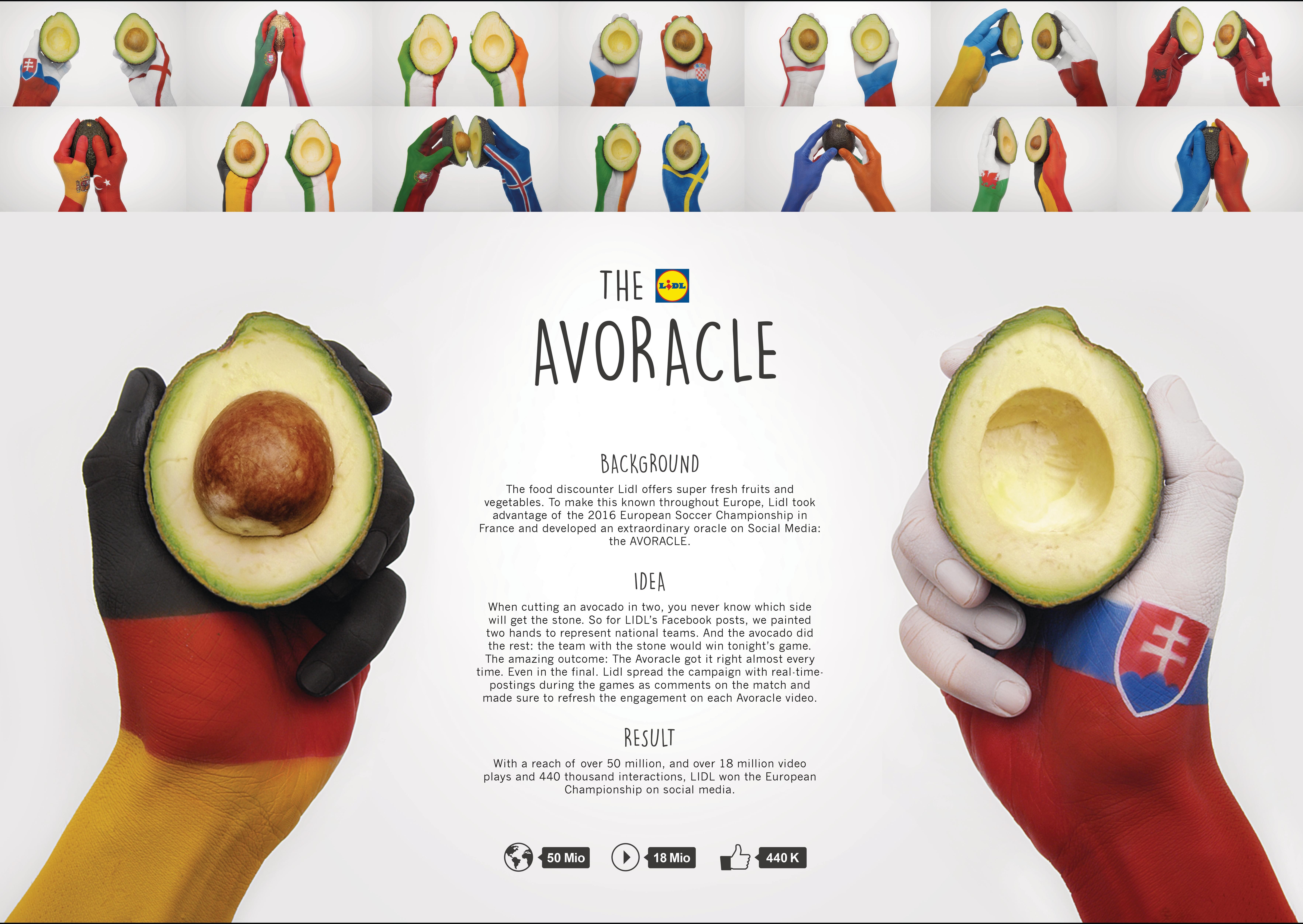Cannes Lions
Sidestepping the Easter Bunny
TBWA\LONDON / LIDL / 2019

Overview
Entries
Credits
OVERVIEW
Background
1. Britain’s obsession with the weather is well known. So Springtime has a special place in our hearts. Things start to warm up, the sun tentatively arrives (occasionally), sweaters are put away, shorts come out. In short, we feel good. Positive. Optimistic. The campaign shamelessly tapped into that feeling.
2. The BBC’s Springwatch series has been running since 2005. On paper it sounds a little weird – wildlife experts sitting round, night after night, watching animals being born and talking about it. In practice, it’s pretty magical viewing, and continues to attract large audiences. It’s wholesome, natural, feelgood.
Idea
The insights gathered around Spring were brought to life by spoofing a British TV institution synonymous with the season – BBC Springwatch.
Like no other, the programme charts the new beginnings of British wildlife during the changing of the seasons. Recreating the format as ‘Lidl Springspotters’ allowed Lidl to tap into the nation’s optimism around new beginnings, and to feature a wide range of products beyond the usual focus on Easter chocolate – from the abundance of Spring foods to the first tentative BBQ of the year.
To cover the whole season, media spend was smoothed out across an 8 week period, in contrast to competitors’ frenzied 3 week bursts.
Social listening helped finetune campaign messaging to reflect realtime sentiment around Spring moments as they occurred. Then linked them to the most relevant products. For example, cocoa during an unexpected cold snap, baking products in rainy school holidays.
Strategy
Three pieces of data unlocked the breakthrough:
1. Media spend analysis
Easter is undoubtedly a peak on the retail calendar, but it’s a short one. A lot of marketing effort goes into a crowded sales spike (£40m spend in the 3 weeks around Easter, compared with £18m for the following 3 weeks).
Lidl couldn’t outspend, but it could double its share of voice if it talked outside these peak weeks.
2. Qualitative research
Focus groups highlighted 2 problems:
- most shoppers tend to do their Easter shop with their usual retailers, simply popping some extra Easter products into their regular basket
- Lidl’s range and quality wasn’t perceived to be good enough for the main Easter shop
3. Online social listening
Attempts to understand consumer motivations (based on the previous Easter) found very little conversation around Easter itself. Consumers didn’t appear to care about it as much as retailers. Conversely, there was lots more conversation around the broader time of year, Spring. And this conversation was very positive – painting Spring as a time of optimism, new beginnings, better weather, life blossoming.
The Breakthrough:
WHY OWN A WEEKEND – EASTER – WHEN YOU CAN OWN A SEASON – SPRING?
Outcome
Value Sales grew 11.7% YOY over the campaign period (8 weeks to 6th May) vs market growth of just 2.3%.
Equivalent to a YOY sales increase of £85m.
While competitors’ sales growth halted immediately post-Easter weekend, Lidl sales continued to grow impressively across the entire Spring season. The longer, smoothed-out media spend delivered a continued impact through April and into May.
An extra 525,000 shoppers visited Lidl stores over the campaign period YOY.
Misperceptions over range and quality were addressed.
The majority of this sales growth (96%) came from products outside the Easter aisle. However, there was surprisingly strong sales performance in Easter products too – Lidl was the fastest growing retailer in the Easter category in 2018 with +21.2% YOY sales growth.
Estimated ROMI in excess of 3:1. The £49.4m uplift (over and above that attributable to extra stores) was achieved with a media investment of £15m.
Similar Campaigns
12 items





